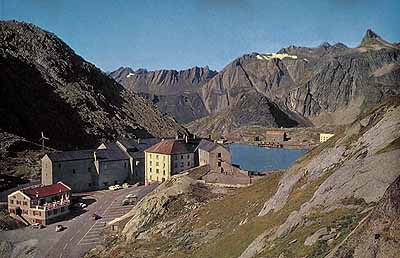The crossing of the Great Saint Bernard Pass remains an epic moment in the course of Napoleonic history. Indeed, although whilst many of the Swiss passes were crossed by French, Russian and Austrian armies, only the crossing of the Great Saint Bernard is ever remembered. From one cunning commission given to the painter David, the First Consul's propaganda machine left its mark on posterity with this most famous representation of Napoleon, Bonaparte crossing the Great Saint Bernard Pass, a painting which could almost be described as a modern icon, of which the original is held at the Château de Malmaison. Here Bonaparte is shown ‘calm upon his fiery steed', the physical embodiment of military conquest. The reality however was a good deal more mundane.
During the Second Coalition, when the Army of the Rhine led by Moreau was manoeuvring in Germany, Bonaparte decided to go to the aid of Masséna who had been encircled by the Austrians in Genoa. At the head of an Armée de Réserve of about 40,000 men, Bonaparte chose the shortest route, in other words over the Great Saint Bernard Pass, reputed to be insurmountable. General Maréscot was ordered to perform the reconnaissance for this crossing of the Alps. From 16 to 18 May, the Armée de Réserve struggled over the pass, an exploit compared by writers of the time with those of Hannibal and Charlemagne (David made reference to these famous crossings by inscribing the two leaders' names in the rocks at the foot of his picture). But it was riding a mule that Bonaparte reached the summit, in dangerous conditions, made worse by snow and cold. He was received at the Saint Bernard Monastery by père Berenfaller. After a few skirmishes with Austrian detachments on the Italian side, the French army was retained by unexpectedly tenacious resistance at the Fort de Bard (19 May). But they reached Piedmont on 25 May and eventually beat the Austrians at Marengo on 14 June.
The route taken by the French army is today a tourist attraction. It goes from Martigny – where Bonaparte established his headquarters from 17 to 20 May, in the Grand-Saint-Bernard prévôte, to Verrès in the Aosta valley, where he pitched camp on 25 May. At Bourg-Saint-Pierre, the First Consul dined in the Auberge de la Colonne militaire which subsequently became the Hôtel du déjeuner de Napoléon Ier. The town hall has on display the letter which Napoleon wrote promising payment for damages and reparations to the commune for the in return for their help and the damage suffered. At the top of the Saint Bernard Pass (see inset), where Bonaparte halted in the late afternoon of 20 May, stands an old hospice which houses a museum recording the history of the place and this extraordinary crossing. Here too is the last resting place of General Desaix who fell at the Battle of Marengo. As early as June 1800, Bonaparte ordered that a tomb be built for Desaix in the Great Saint Bernard Pass, despite the fact that Desaix did not cross the Alps with the Armée de Réserve. The body of the young general, which was placed in Milan in 1800, was buried here in 1805 in the presence of Berthier. A memorial was set up in his in honour in 1806 in the chapel (moved in 1829). General Desaix was laid anonymously under an altar dedicated to Sainte-Faustine.
The route passes via Etroubles and then descends to Aosta and the Bishop's Palace where Bonaparte stayed from 21 – 24 May. Then comes Bard and its famous fort where a plaque records that this was the place where Stendhal received his baptism of fire.
New snowshoe ‘hike of discovery’ (2013)
As of 2013, a new Napoleonic route is now available for visitors to the Pass. Professional mountain guide Didier Cassany offers a 2 days/1 night unique snowshoe ‘hike of discovery' of this historical pass. The hike starts on the Swiss side and follows the Chemin des Chanoines (the pathway taken by the canons of the hospice) and leads up to the Hospice where participants spend the night; includes a talk about the history of this great building and the world-famous St Bernard dogs! The second day continues on the Italian side of the mountain, visiting with the Plan Jupiter and L'Echelette, where Napoleon and the entire reserve army passed in May 1800.
Dates: On request, from December to April. Minimum 4 participants, maximum 6.
Level: *** for sportive hikers.
More information: Write to contact@inalpes.com or inalpes.randonnees@gmail.com
Also visit Didier Cassany's website (in French).


